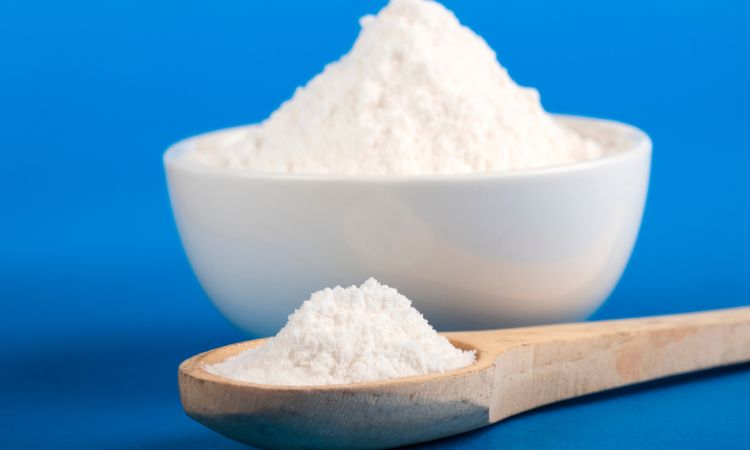
Navigating the Global Sodium Chlorate Market Trends, Forecasts, and Key Insight 2024-2032
The global sodium chlorate market size reached around USD 2,705.0 million in 2023. The market is estimated to grow at a CAGR of 2.7% during 2024-2032 to reach a value of USD 3,289.2 million by 2032. This blog post dives into the world of sodium chlorate, exploring its applications, market dynamics, future forecasts, and the competitive landscape.
Understanding the Sodium Chlorate Market Landscape
A. Forms of Sodium Chlorate: Crystalline vs. Solution
Sodium chlorate comes in two primary forms:
- Crystalline: The most common form, a white, water-soluble solid.
- Solution: Available in varying concentrations for specific applications.
B. Applications of Sodium Chlorate
Sodium chlorate’s diverse applications drive market growth:
- Pulp and Bleaching Industry: The largest consumer of sodium chlorate, employing it in the bleaching process for brighter, higher-quality pulp.
- Chlorates of Other Metals: Sodium chlorate serves as a raw material for producing chlorates of potassium, calcium, and magnesium, used in various applications like batteries and pyrotechnics.
- Leather Tanning: Used in the leather tanning process to improve leather quality and durability.
- Dyes: Plays a role in the production of certain dyes for textiles and other materials.
- Other Applications: Sodium chlorate finds uses in water treatment, food processing, and electronics production.
C. Regional Analysis: Identifying Key Markets and Trends
The global sodium chlorate market is geographically diverse, with some regions experiencing stronger growth than others. Here’s a glimpse into key markets:
- Asia Pacific: Leading the market due to its expanding pulp and paper, textile, and pyrotechnics industries.
- North America: A mature market with steady growth driven by the paper and agriculture sectors.
- Europe: A well-established market with focus on environmental regulations impacting sodium chlorate usage.
Exploring Market Dynamics
A. SWOT Analysis: Strengths, Weaknesses, Opportunities, Threats
A SWOT analysis helps understand the internal and external factors influencing the sodium chlorate market:
- Strengths: High demand from various industries, diverse applications, and established production processes.
- Weaknesses: Dependence on a few key industries, potential environmental concerns, and volatile raw material prices.
- Opportunities: Growing demand in emerging economies, development of new applications, and technological advancements in production.
- Threats: Stringent environmental regulations, competition from substitute bleaching agents, and fluctuations in global economic conditions.
B. Porter’s Five Forces Analysis: Assessing Market Competitiveness
Porter’s Five Forces framework helps evaluate the competitive landscape of the sodium chlorate market:
- Threat of New Entrants: High capital investment and established players make entry challenging.
- Bargaining Power of Suppliers: The market has a limited number of raw material suppliers, giving them some leverage.
- Bargaining Power of Buyers: Pulp and paper industries are powerful buyers who can influence pricing.
- Threat of Substitutes: Chlorine dioxide and other bleaching agents pose some threat, but sodium chlorate remains cost-effective.
- Competitive Rivalry: The market is moderately concentrated with several regional and global players.
C. Key Indicators for Demand: Factors Influencing Market Growth
Several factors influence the demand for sodium chlorate:
- Pulp and Paper Production: Growth in this industry directly impacts sodium chlorate demand.
- Environmental Regulations: Stringent regulations on the use of chlorates can dampen demand in some regions. However, advancements in production processes that minimize environmental impact can mitigate this effect.
- Agricultural Practices: The use of sodium chlorate herbicides can fluctuate based on agricultural practices and weed control methods.
Forecasting the Sodium Chlorate Market (2024-2032)
A. Projected Growth Trends
As mentioned earlier, the global sodium chlorate market is expected to exhibit a CAGR of 2.7% from 2024 to 2032, reaching a projected value of USD 3,289.2 million by 2032. This growth will likely be driven by:
- Expansion of Pulp and Paper Industries: Particularly in Asia Pacific, the growing demand for paper products will fuel sodium chlorate consumption.
- Development of New Applications: Research into alternative uses like lithium-ion battery production could create new market opportunities.
- Focus on Sustainable Production: Advancements in production methods that minimize environmental impact can open doors to new markets with stricter regulations.
B. Emerging Opportunities and Challenges
While the future looks promising, some challenges need to be addressed:
- Fluctuations in Raw Material Prices: The cost of sodium chlorate can be affected by fluctuations in the prices of raw materials like chlorine and sodium chloride.
- Stringent Environmental Regulations: As environmental concerns grow, stricter regulations on chlorate usage and disposal could pose challenges for producers.
- Competition from Substitute Bleaching Agents: The development of cost-effective and environmentally friendly alternatives could threaten sodium chlorate’s dominance in the pulp and paper industry.
Competitive Landscape
A. Major Players in the Sodium Chlorate Market
Several companies dominate the global sodium chlorate market, including:
- ChemChina (China)
- Olin Corporation (US)
- Electro Chlorate India Limited (India)
- Agrium Inc. (Canada)
- Euro Chlor (Europe)
B. Strategies Adopted by Key Market Players
Leading players are adopting various strategies to maintain their position:
- Geographic Expansion: Establishing production facilities in emerging markets to cater to growing demand.
- Research and Development: Investing in R&D to develop new applications for sodium chlorate and improve production processes for sustainability.
- Strategic Acquisitions and Mergers: Consolidating market share through strategic acquisitions and mergers.






Leave Your Comment